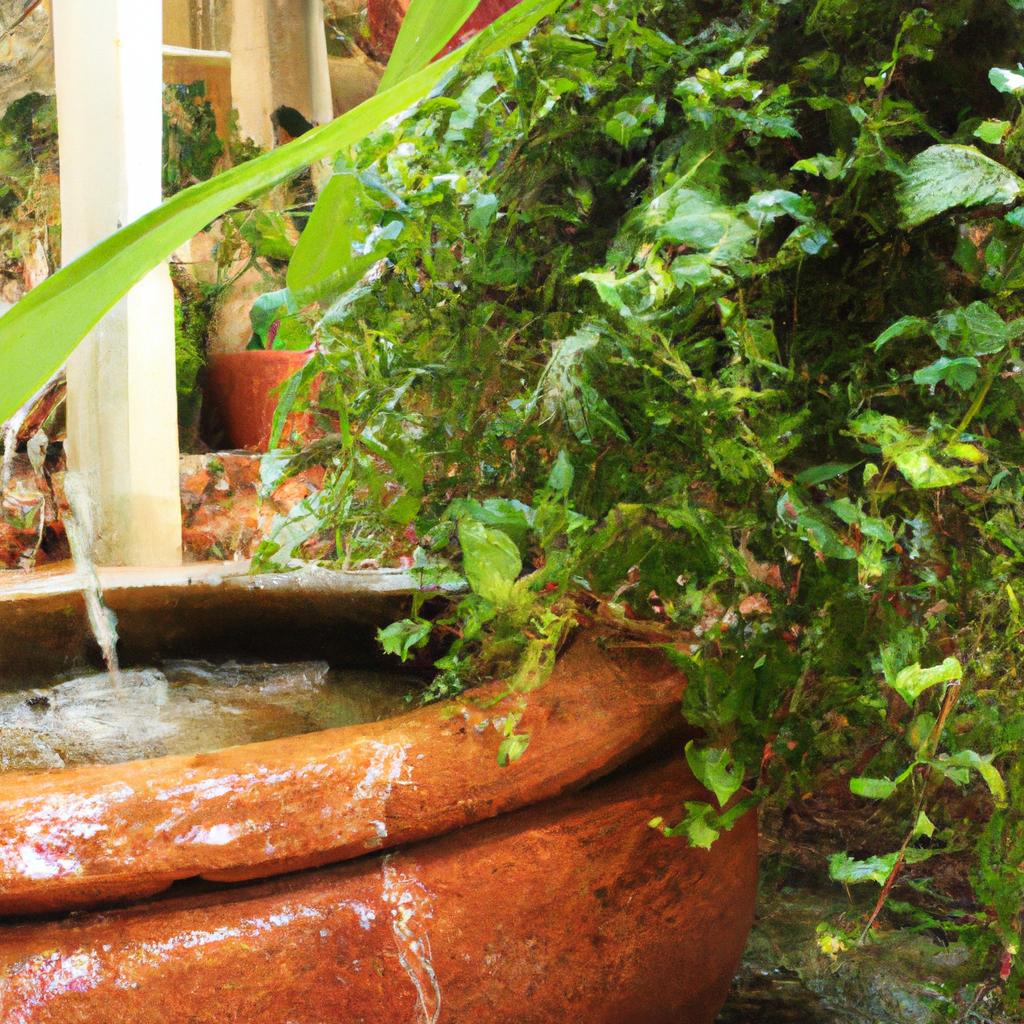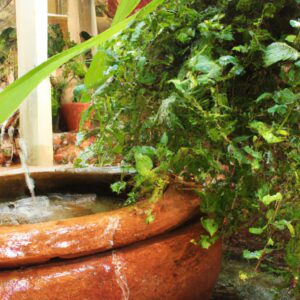Introduction – Transforming Your Outdoor Space into a Tranquil Oasis
As anyone who has ever visited a garden knows, it can be a special place of solace and relaxation. Gardens provide a welcome sanctuary in the hustle and bustle of life, allowing you to spend time reconnecting with nature and with yourself. It is possible to cultivate your own garden paradise right in your backyard with the right garden design ideas.
Garden design ideas not only create an inviting and beautiful outdoor oasis, but they can also help to reduce stress, improve the environment, and attract more wildlife. Through thoughtful planning, it is possible to design and create an outdoor space that is both pleasant to look at and functional for entertaining. This guide will provide helpful tips and advice on how to transform your outdoor space into a tranquil oasis.
Gather Inspiration for Garden Design Ideas
When it comes to creating a tranquil oasis in your outdoor space, the right garden design ideas can make all the difference! Before you dive into planning, it’s important to gather some inspiration. Fortunately, inspiration for your garden can be found just about anywhere!
One of the best places to start is with magazines and catalogs. You would be amazed at the endless possibilities these can provide! From inspirational pictures for color schemes and textures to helpful gardening tips, they are the perfect place to start off your green thumb journey.
Of course, the internet is also an invaluable resource when it comes to finding garden design ideas. From blogs to Pinterest to Instagram, there are countless websites that showcase inspiring gardens and share helpful advice. It’s also an excellent way to learn more about specific plants and shrubs.
As you look for ideas, keep a journal or scrapbook of things that catch your eye, and don’t forget to note the elements that you like. This will be an invaluable reference as you get ready to plan out your own outdoor oasis.
Assess Your Space
Knowing the right place to start is the key to transforming your outdoor space into a tranquil oasis. There are a few essential considerations when assessing the size and layout of your garden space. These include the quality and condition of the soil, the amount of sunlight available, the slope of the land, and any existing features you wish to incorporate, such as patios or already established trees.
It’s also important to think about how much space you would like to dedicate to lawn and how much to flowers, trees, and shrubs. Additionally, consider which areas might be best suited to certain activities, such as sitting, grilling, or playing games. By taking these factors into account beforehand, you can ensure that your garden design matches up with your needs and expectations.
Selecting Some Ideas for Your Garden Design
When it comes to garden design ideas, there are endless possibilities – from the striking and bold to the subtle and calming. Here are just some of the popular themes that you can explore:
- Minimalist Gardens – If you don’t have a lot of space or don’t want to spend too much time on maintenance, then a minimalist garden is ideal for you. The focus is on simplicity, using neat lines and low-maintenance materials such as concrete and gravel.
- Cottage Gardens – This style is great for smaller spaces, with features such as winding pathways, trellises, birdbaths, and plenty of colorful flowers. There is a sense of nostalgia to these gardens, creating a sense of “home away from home.”
- Mediterranean Gardens – These gardens incorporate architectural elements such as arches, courtyards, and seating areas. Plant selection usually involves drought resistant plants such as lavender, rosemary, sage, and olives.
- Zen Garden – This type of garden is all about tranquility, incorporating elements like raked gravel, stone lanterns, water features, and carefully pruned trees and shrubs. The goal is to evoke harmony and peace, perfect for creating a quiet oasis in your outdoor space.
These are just some of the most popular garden design ideas that you could choose from. As unique as each person’s individual style may be, there is something for everyone to find and create their own tranquil oasis.
Finalize the Design: Crafting an Aesthetically Pleasing and Sustainable Garden
When designing your garden, you need to think about both aesthetic preferences and sustainability. This means creating a plan that supports both your love for your outdoor space and its environment. Here are some tips on how to achieve this harmony.
Think About Your Needs and Preferences
Creating a garden that fits your individual needs is key when figuring out design. Consider how often you will use the space, what activities you would like to host and what atmosphere you would like to foster. Do you want a vibrant, colorful garden for a lively atmosphere? Or do you prefer a peaceful and meditative environment? Think about if you need to incorporate any special features such as a water feature or seating area.
Choose the Right Plants and Materials
It’s easy to get carried away with plants while designing. However, it’s important to remember to choose plants that are sustainable for the climate and soil type of your outdoor space. Choose plants that are native to the area and require minimal maintenance. For materials, consider natural stone, wood, recycled materials, or ecologically-friendly options.
Sustain Your Design
Keeping your garden sustainable means ensuring that all elements of the design – from plant selection to the materials and equipment used – support the health of the environment. Pay attention to factors like soil fertility, water usage, and pesticide use. Research the type of soil present in your garden and choose plants that need minimal care and thrive in those conditions. Consider using natural alternatives to chemical pesticides.
By paying attention to these steps, you can ensure a tranquil and sustainable oasis that reflects your own personality and style. With the right design and maintenance, you’ll have a space you can enjoy for years to come.
Selecting the Right Plants for Your Garden
When it comes to designing your garden, selecting the right plants for your environment is key! Suitable plants depend on the size and layout of the garden, the soil conditions, the amount of sunlight, and climate.
Before making any plant selections, you should also consider your budget and lifestyle requirements. If you have more of a low-maintenance garden in mind, then it is best to choose plants that require little care. For example, drought-tolerant shrubs, ornamental grasses, and groundcover are all great options.
If you want something more vibrant and colorful, you can try out annuals like daisies, petunias, and snapdragons. Then there are perennials like daffodils, tulips, and mums, which bloom at different times of the year. Trees are another great addition if you want to create an outdoor oasis. Some popular options include birches, willows, and Japanese maples,
Keep in mind that while certain plants may look attractive, they may not be suitable for the environment. Therefore, researching each plant’s growing requirements is essential if you want to ensure its survival. It is also important to remember that soil conditions may need to be amended before planting.
Tools and Equipment
When it comes to creating a tranquil garden oasis, having the right equipment is essential. From spades and shovels to pruners and trowels, having the right tools will help ensure a successful garden design.
A basic garden tool set should include: a spade to dig trenches and turn soil, a shovel for moving soil or scooping compost, pruners for trimming trees and pruning shrubs, a rake for flattening soil, a trowel for planting small bulbs and seedlings, and a hoe for weeding, cultivating, and clearing excess plants.
Additionally, some other helpful tools may be needed depending on the size and complexity of the garden, such as a wheelbarrow for carrying materials like soil and mulch, a long-handled tool for reaching high branches, and a pair of gardening gloves to protect your hands from thorns and insects.
Making sure you have the right tools and equipment for each task is important for efficiently completing the work. It also helps to ensure that the garden is maintained in pristine condition.
Maintenance
Keeping a garden in top shape requires a bit of dedication and elbow grease. Different activities need to be done at different times of the year, such as weeding, pruning, mulching, fertilizing, and more. Proper maintenance helps keep your plants healthy, reduces stress on them, and helps ensure that they look their best all year round.
Here are some of the most important activities to keep in mind when it comes to maintaining your garden:
- Weeding – removes any invasive or unwanted plants from the garden.
- Pruning – creates a neat, uniform look and can also help with air circulation and pest control.
- Mulching – helps retain moisture in the soil and prevents weeds from taking hold.
- Fertilizing – provides essential nutrients to the plants.
- Watering – helps sustain plant’s health and growth, and should be done regularly.
- Pest control – eliminates or traps any insects or animals that may be damaging the plants.
It is important to also keep an eye on the weather forecast, as well as monitor the soil for signs of over- or under- watering. Moreover, regular inspections are important for spotting any disease or insect damage early on and taking steps to address it before it becomes a bigger issue.
Re-Designing Your Garden
Sometimes, a garden space can become stale and dull, especially when the same plants and flowers have been in place for years. To ensure the garden remains vibrant and full of life, it’s important to look at how it can be re-designed periodically. This could involve changes in season, changes to lifestyle requirements, or just a general update so the outdoor space continues to be inviting.
When designing changes, it’s important to focus on four key areas: color, style, texture, and purpose. By varying these elements and introducing new plants or materials, you can create an updated look that keeps your garden fresh and inviting.
If the garden is large enough, consider adding seating areas, or a pergola with planters hanging from it. This will give the space more dimension and provide more areas for relaxation and entertaining. For smaller gardens, think about designing vertical structures and pathways that will add height and interest.
It’s also important to consider which plants will best suit the space, based on the local climate. Consider introducing flowering plants, trees, fruit and vegetables, or herbs depending on the size of the garden. These can be rotated each season for a variety of colors and textures all year round.
Whether big or small, by regularly re-designing the garden, you can ensure its always looking fresh and inviting for your outdoor gatherings.
Conclusion
Creating a tranquil oasis in your outdoor space is not a daunting task. With a few simple steps and guidance from this guide, you can easily turn your garden into a beautiful and peaceful place. Most importantly, remember to take into consideration the size and layout of your garden, choose the right plants and materials for the climate, use the right tools and equipment, and maintain the garden regularly. With these tips, you will be able to transform your garden into a tranquil oasis.
comments: 0

